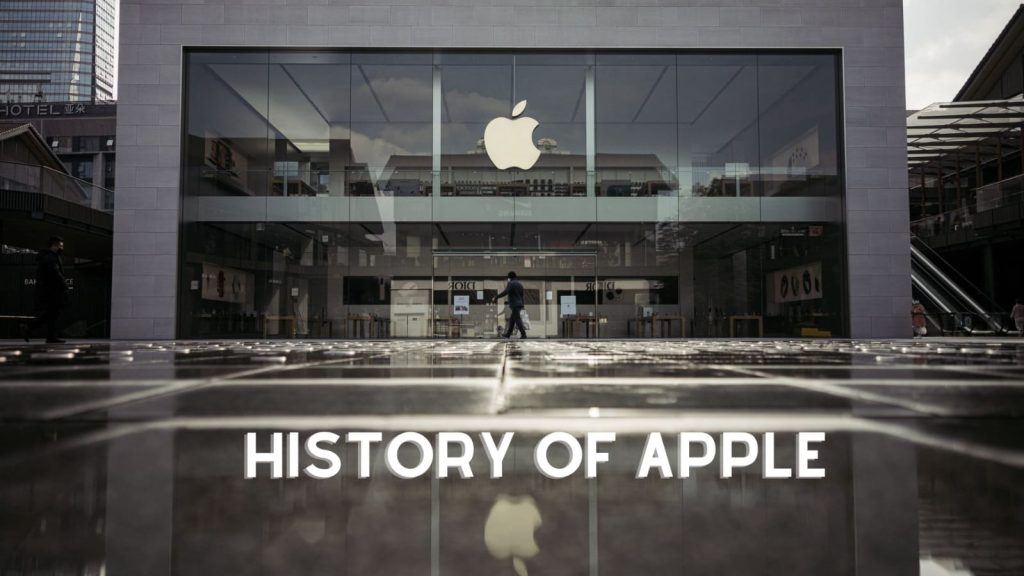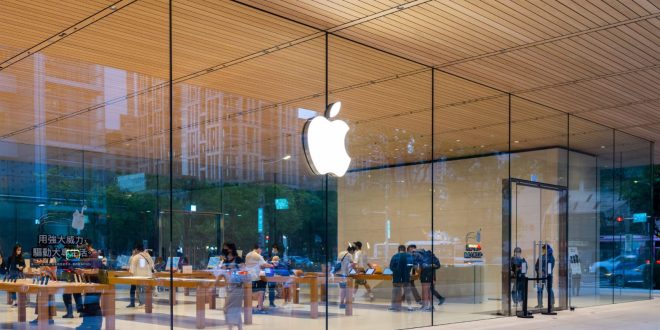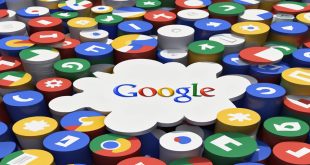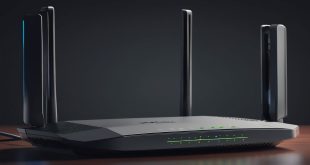Hi, you live in a world where Apple is pretty much the most valuable company on earth, but it was never supposed to be like this. This almost didn’t exist, but why? But let me just take you back to—oh yeah, right here, it’s 1969. The baby boomers were all grown up, and they hated their country. They didn’t want to go fight in the war that was happening, and they had new ideas about what the world was really about.
Some of that change involved technology, and as a matter of fact, some nerds were working really hard to make the first ever microchip, and some other nerd was a really big fan of this new microchip thing. But before we get to this guy, there’s someone else we have to talk about who is arguably even more important to the creation of Apple. Steve Wozniak was a student who loved computers and everything about them. He would read books about their inner circuitry and work out problems by himself just as a hobby, and it was his dream to own a personal computer. But back then, it was tough because, at the time, computers looked like this. And that’s not very personal, if you ask me. But this changed in 1974, when the first ever personal computer was released, which looked like sh*t. Yeah, it didn’t really do anything. It was a simple box with some flashing lights that you could program to make the lights flash in different orders. We had a long way to go. But luckily for us, this blew Steve Wozniak’s mind, and he was hooked on computers for good. Not only did this blow the mind of Steve Wozniak, but it seemed like it also blew the minds of nerds across the world, causing computer clubs and universities to form. They would come together and fiddle with this thing, discuss the inner workings of its technology, and ponder the future of computers as a whole. One of these clubs was in San Francisco, the Home Brew Computer Club, where students would bring their own little inventions using the technology available at the time. This club was the very one our good pal Steve Wozniak was a part of. And wait, oh, who’s that? Steve Jobs was also home to this very same computer club, and after he watched the Steve Wozniak guy bring in his own computer week after week, the Steves eventually went up to one another and said, Hey, maybe we should sell these things. Now you’re probably thinking they came up with something brilliant in the garage, which they called a workshop, but in 1975, the two boys released… this thing. Yeah, that’s right. This was actually the first device that these two geniuses ever worked on. It was a simple tool that could help you make long-distance calls without having to pay.
But that thing didn’t take off, so they went back to the garage and made the Apple One. It didn’t have a screen, it didn’t have a mouse, and it didn’t have a keyboard, but it was able to run Angry Birds. Just kidding. The Apple One was just a circuit board that could basically do some simple calculations, and it cost a fortune at the time. 200 were ever made and 50 were sold, which resulted in a little over $30,000. Nice! Okay, well, we still have a little way to go. $30,000 at the time wasn’t bad at all. And this was all the proof that Steve Jobs needed. He knew that the future would have people who loved computers, but not everyone who loved the idea of using a computer would be able to build it themselves. And the Apple One didn’t really fit that new narrative, and so the two set off to make the Apple Two. This time, they went with a different approach. They wanted to build a computer that was sold as the full package instead of the previous one, which was only a circuit board. The problem was that it was impossible with the technology at the time. But wait, Steve Wozniak didn’t believe that. He started combining different chips and looked through manuals to find chips that could multitask. After doing that over and over a few times later, he ended up with a computer that had very few chips. Not only could this one do the same simple calculations as the Apple One, but it was also able to produce colored graphics and patterns right on the built-in screen. Cool, it’s cheaper to produce, more compact, and it’s even more capable than the Apple One, but it is still ugly. It’s still a hunk of chips and wires, and it looked pretty threatening to someone who isn’t a wizard with computers. And that’s where Steve Jobs comes in. While Wozniak was the engineer behind the computers, Steve Jobs was the marketer. He was one of the first people in the world to realize that technology was not just a tool; it could also form a personal connection with the user. You can have many views of what a computer is.

My particular view is that a computer is a new medium. He knew just how to make something look nice, and he also knew how to sell it to people. So they fit all of this junk into a sleek, simple, and friendly casing that made the computer very inviting to general consumers. And with the new design, it was clear they had no problem selling it to people because the Apple II was released in 1977. and by the end of its production life, it had sold 6 million units. Apple was now worth approximately $2 billion, which was a lot of money at the time. But that’s still pretty far from what we know it to be today. Due to the success, it was time for the company to kick into high gear. New management came in, and on December 12, 1980, Apple was put on the public stock market, selling 4.6 million shares at $22 per share. By the end of the day, it’s said that 300 millionaires were created with all of the people who owned these shares of Apple at the time, and things only went up from here. Just kidding. Soon after, they released the Apple III, which was famous for being unreliable and buggy. Then they released the Lisa, which was the very first computer with a graphical user interface, just like the one you’re using right now. Pretty cool, right? Apparently not. They didn’t really make any good apps for it, and the computer itself was super expensive, so nobody bought it. Plus, while they were busy making Lisa, they kicked Steve Jobs off the team due to intercompany fighting. This thing stinks. I’m just going to make the same thing, but better. And so he did. He literally said that and went on to make one of the most successful computers of all time, a computer you might know as the Macintosh. It was basically the Lisa, a computer that had a graphical user interface, or GUI for short, but this time it was cheaper. They premiered an ad for it during the Super Bowl, and everyone called it the greatest ad of all time and a sales boom, but then they tapered off because the reviews came out. The Macintosh still kind of sucked. It was slow, I couldn’t really do much, and people thought it was super expensive.
And this made Steve Jobs angry. Remember when I said that new management came in? Well, one of those guys was from Pepsi, John Scully. And because of Macintosh’s criticisms, John and Steve started arguing. Do you want to sell sugar water for the rest of your life or come with me and change the world? Just get out of here. And so Steve was taken out of the position as head of Macintosh. You want me to leave? Well, I’m leaving. And by the way, the other Steve is gone too. And so Steve Jobs left to do some other stuff with this little old company called Next. Wow, look at these computers, man. They can make 3D animations. Nobody’s ever seen this before. Wow, you could probably make something cool with this kind of technology. Oh my gosh. Toy Story? That’s amazing! Let’s check back at Apple and see what’s happening without Steve Jobs and Wozniak. Oh, okay. The Macintosh 512K has a little bit of a weird name. I mean, that’s cool. It has some cool publishing applications. I guess. Man, they are really raising the price of it, though. I hope that doesn’t come back to bite them in the—oh, shi—how the hell are we supposed to get here? Well, Apple kept making computers, but they were just missing that spark that people like Jobs and Wozniak brought to the company. Sure, they made some pretty powerful stuff and started to lower their prices as the technology became more available. They even started to get into other entertainment markets, like CDs and game systems. Actually, we probably shouldn’t talk about the game system. They had a new CEO, Gil Amelio, and he started to make some changes to help the failing company. But something was coming. Something really bad. Hello, I’m Bill Gates, chairman of Microsoft. Microsoft started making computers, and they started making computers that were cheaper than Apple and just as good.
Apple computers were expensive and boring. And even though the Microsoft ones were also boring, at least they were cheaper. Not only was Microsoft on their tail, but it seemed like everyone was just getting into the computer markets, and the demand for Apple devices was becoming smaller and smaller. Apple was just weeks away from bankruptcy, and this was it for Gil. Okay, we have to get him back. And so, Apple purchased Next in 1996 for $400 million, and with Next, they also got back Steve Jobs, which immediately made Gil resign, and Jobs then became the CEO in 1997. He threw 70% of the company’s projects in the garbage, fired 3,000 people, and with the extra money that was now saved, he bought a bunch of companies that were making Apple clone computers. Now that they had worked for him, it was time to put all of their brains together to make the best computer possible. On May 6, 1998, Apple introduced their newest all-in-one computer reminiscent of the original Macintosh, the iMac. By the way, keep that in mind for later. The iMac was a huge success, with 800,000 units sold in the first five months, and it was responsible for major shifts in the industry. It used USB, it could connect to the internet right out of the box, and it just looked cool. Like I said before, Steve Jobs was the guy to make things marketable, and he brought back Apple’s spark. A year later, in 1999, they made the iBook, which is pretty much the iMac but in laptop form. But that name was a little bit weird, though. Maybe they’ll work on it. Remember when people complained that the original Macintosh didn’t have enough apps? Well, this time, they fixed it. Steve Jobs was coming off the tail of his movie career, and he wanted to bring that fun to Apple. They made video editing software, DVD burners, music-making software, and also one that allowed you to listen to those CDs that you owned called iTunes. Apple was now building a little ecosystem of devices and software. But where were they going to sell this stuff? Oh, they just opened a store. Okay, cool.
Maybe then I’ll take off. Who knows? Anyway, iTunes was cool and all. But who the heck sits at their desk and just listens to music? Don’t you want to, like, I don’t know, go outside? Maybe you want to listen to music while you’re exercising, on the bus, or something. We need some kind of, I don’t know, mobile device. We have something really exciting for you today. We lured you here today with the promise of unveiling a breakthrough digital device that’s not a Mac. And that’s exactly what we’re going to do. And we are introducing a product today that takes us exactly there, and that product is called the iPod. The iPod is here. 100 million units were sold in six years. It was massively successful. The iTunes Store became a thing, allowing you to buy songs on the internet that you could take with you anywhere. Apple was now valued at 72 billion dollars. We’re back on track, baby. But, to be honest, we’re still really far from that other number. You know, three trillion dollars. But hey, maybe we can get there with the mobile device thing. I mean, the iPod is pretty cool, but what if it could do more? Maybe make phone calls or something? Nah, I saw this thing called the Blackberry, and it kind of stinks. There’s this tiny little keyboard; it’s too hard to use, and it’s trying to do way too much at once. But I just made a prototype of what an Apple phone could look like. It’s too big. No one will want to carry this chunky thing around in their pocket. My grandma can make a better design. How about I just make it a bit smaller? Can we sell it then? I mean, you could try. This is a day I’ve been looking forward to for two and a half years. Every once in a while, a revolutionary product comes along that changes everything. Today, we’re introducing three things: a widescreen iPod with touch controls, a revolutionary mobile phone, and a breakthrough internet communications device. an iPod, a phone. Are you getting it? These are not three separate devices. This is one device. And we are calling it the iPhone. Today, Apple is going to reinvent the iPhone. It sold 270,000 units in 30 hours. It was Apple’s most successful device launch in history. Apple Computer Incorporated was renamed Apple Inc. Due to the company’s shift in priorities, mobile devices were the future. This device was called a game-changer for the industry. It was a camera, it was a personal planner, it was a notebook, and it was an alarm clock. It was an entire computer with a touch screen in the palm of your hand. Apple knew they were onto something.
They knew that this phone could do infinite things, but infinity is a big number for one company to handle. So they created the App Store, which allowed developers to create their own applications for the iPhone and iPod Touch. Within a month, the store had sold over 60 million applications and had a daily revenue of over $1 million. By October 2008, Apple was the third-largest mobile device supplier in the world due to the success of the iPhone. Apple was now worth $180 billion, and it was just going to keep going up from there. Why not make the phone bigger? Boom! They created the iPad. And millions of kids across the globe bought it just to watch. Apple kept releasing iterations of the iPhone year after year and continued to make their own applications, such as FaceTime and iMessages, building their ecosystem up more and more as their valuation just kept skyrocketing. Apple became the most valuable consumer-facing business in the world, and it was looking unstoppable. Unfortunately, there was a problem. Well, as some of you may know, about five months ago, I had a liver transplant. I’d like to take a moment and thank everybody in the Apple community for the heartfelt support I got. In 2011, Steve Jobs announced that he would be leaving the company to focus on his health. The COO of Apple, Tim Cook, took over Jobs’ day-to-day operations at Apple. In a surprise, Steve Jobs took the stage in 2011 to announce iCloud for the last time. So, I get to talk about iCloud. We’ve been working on this for some time now, and we’re really excited about it. And on October 5th, 2011, Steve Jobs died from complications from cancer. It was time for a new era of Apple. With Tim Cook leading the charge, he was determined to keep Jobs’ dream alive. Innovation was still nonstop, and the company was only about to get larger. In 2012, Apple released the iPhone 4S with Siri, the first digital voice assistant that had everyone going crazy. They released the iPhone 5 with better displays, the iPad Mini, the MacBook Pro, a new iMac, and a Mac Mini. In 2012, Apple was valued at a record $624 billion. They worked with Dr. Dre to make some sick headphones. In 2014, they announced the Apple Watch. In 2016, Apple announced that over one billion Apple devices were in active use worldwide. In 2017, they made smart speakers, launched streaming services, and funded their own films.
But in 2017, they changed the look of the iPhone forever with the iPhone X, removing the home button and completely changing the way that the phone felt. The company was valued at over $2 trillion by the end of 2020. Now we’re cooking. We’re almost at where we’re at today. But speaking of cooking, what does Tim Cook have to say? It looks like we’ve got the phones down, but something’s wrong with the other side of things. We keep ignoring our MacBooks and iMacs. I mean, look at them. They’re built with parts that aren’t even ours. We literally just put the things together and made the shell. So Apple threw away all of the Intel processors and produced the Apple M1 chip. It was faster, more efficient, and overall more powerful than all of the other previous models. And hey, look at that. The price of the computers actually became cheaper because Apple was making the chips themselves. This was one of the last pieces of the Apple puzzle. We’re pretty much in the present day. We’ve hit our $3 trillion valuation mark. The iPhone is at its peak, and so is the Mac lineup. But hold on, what’s this? Apple is filing trademarks for something called Reality OS and a bunch of other virtual reality technology, along with AI. Huh, it looks like there’s just one more thing. The Apple Vision Pro is here, and for the first time in a while, we’ve got a brand new Apple device. It’s not a phone; it’s not a computer; it is something completely different. Just look back at where the iPhone and Mac lineups were and how they’ve ended up now. Apple has come this far, so who’s to say that this brand new line of products won’t take them even further?



